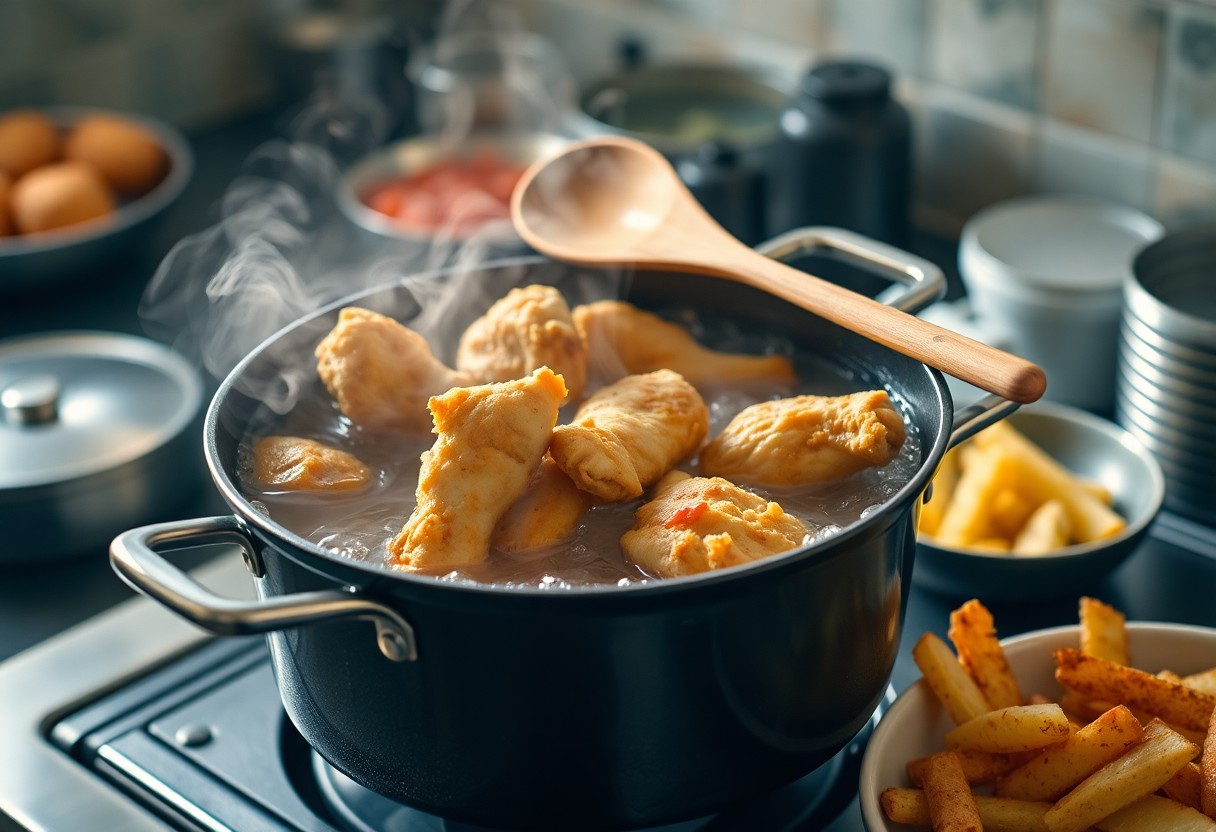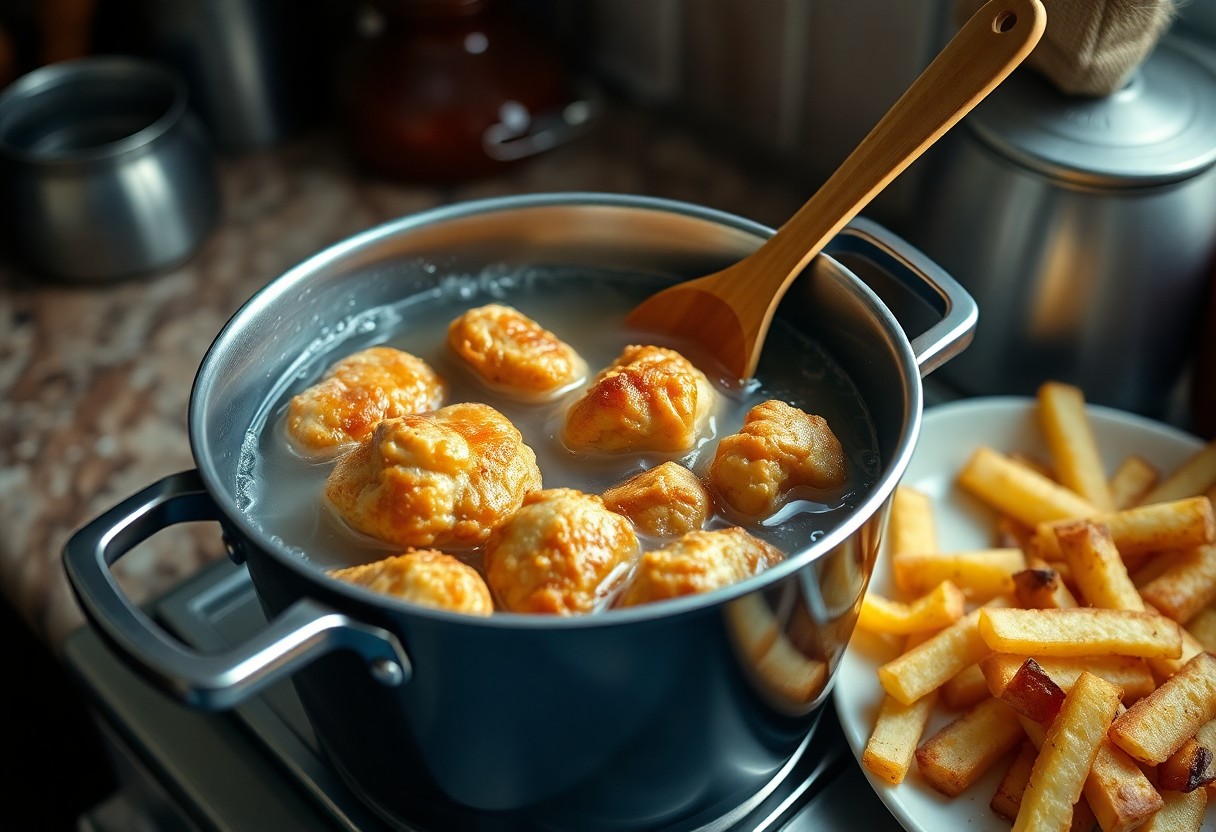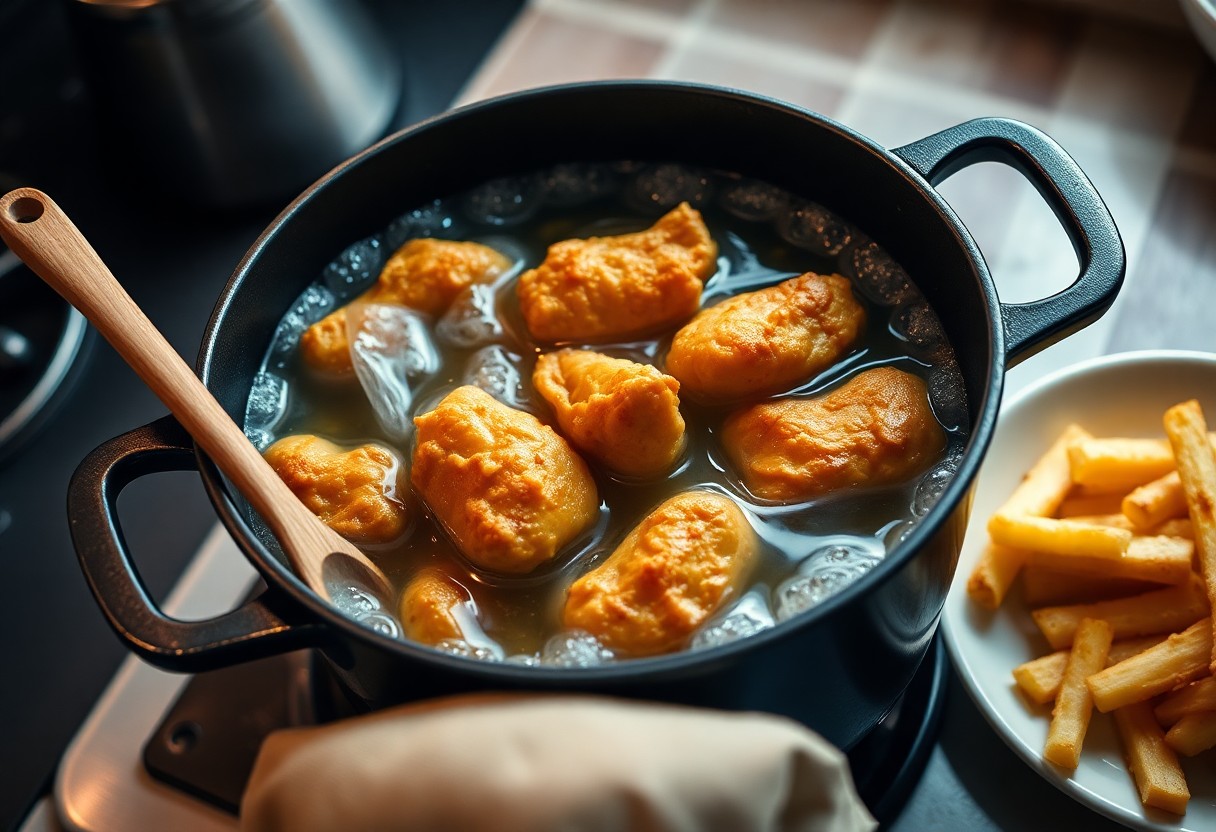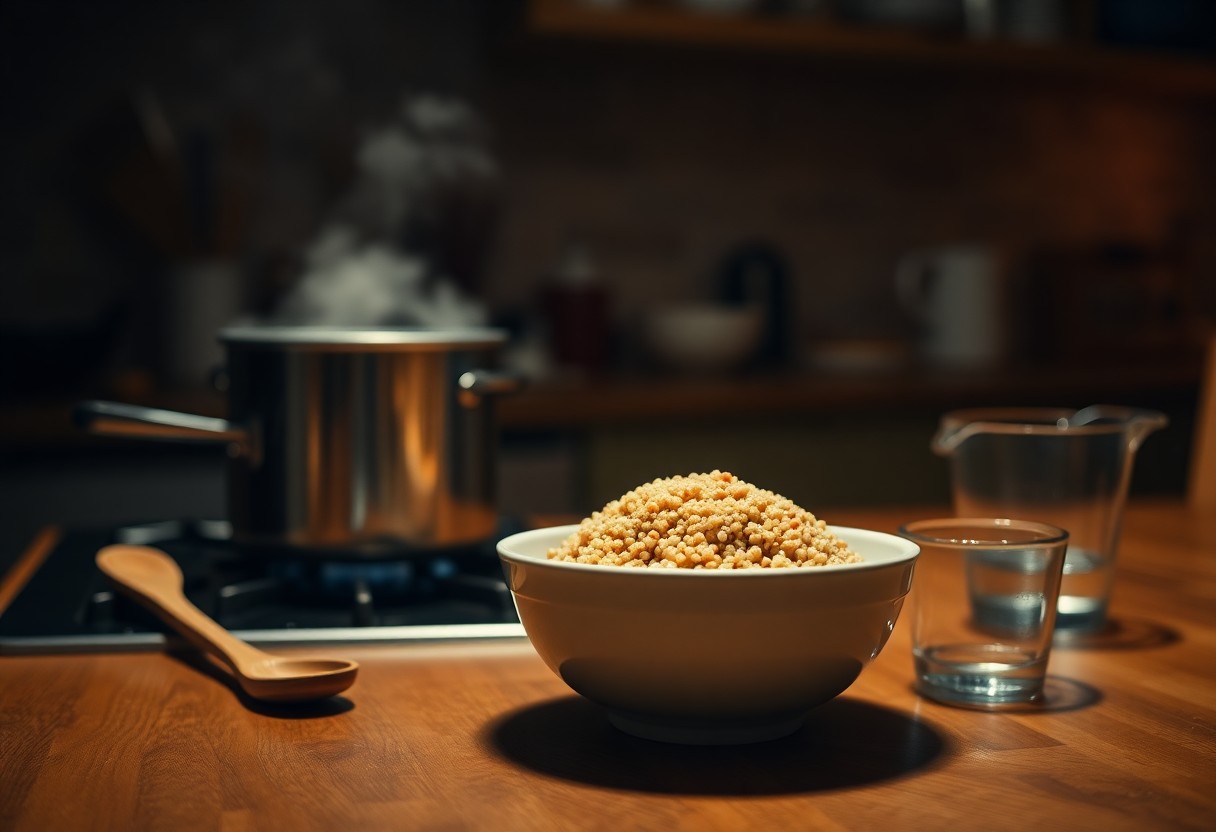You’re about to unlock the secrets of deep-frying in a Dutch oven, and with this guide, you’ll be able to achieve perfect, crispy results. Your Dutch oven is more versatile than you think, and with the right techniques, you can use it to fry your favorite foods to a golden brown. By following these steps, you’ll learn how to set up your oven, choose the right oil, and cook your food to perfection, ensuring a delicious and safe deep-frying experience.
Key Takeaways:
- When deep frying in a Dutch oven, it’s crucial to use the right temperature and oil to achieve perfect results.
- Safety precautions should always be taken when working with hot oil, such as never leaving it unattended and keeping the area well-ventilated.
- Using a thermometer to monitor the oil temperature is vital to prevent overheating or underheating, which can affect the quality and texture of the fried food.
Choosing the Right Equipment
While selecting the right equipment is vital for deep frying in a Dutch oven, you need to consider a few key factors to ensure your safety and success.
Selecting a Dutch Oven
To begin with, you will need a Dutch oven that is heavy-bottomed and has a tight-fitting lid, allowing you to maintain a consistent oil temperature and prevent splatters.
Essential Accessories for Deep Frying
Acquiring the right accessories is necessary for safe and efficient deep frying, you will need a thermometer to monitor the oil temperature, a frying basket or strainer to lower and lift food, and a pair of long-handled tongs or a slotted spoon to handle the food.
Oven safety should always be your top priority when deep frying, and having the right accessories, such as a thermometer and a splatter guard, will help you to achieve this, you can then focus on perfecting your deep frying technique and enjoy your delicious creations.
Preparation and Safety Tips
The key to successful deep frying is being prepared. Consider the following:
- Choose the right oil
- Use a thermometer
Thou shall take necessary precautions to avoid accidents.
Preparing the Dutch Oven for Deep Frying
Equally important is preparing your Dutch oven. You will need to preheat it to the right temperature and ensure it’s clean and dry before adding oil.
Ensuring Safety While Deep Frying
Similarly, you must ensure your safety while deep frying. You should never leave the stove unattended and keep a fire extinguisher nearby.
Dutch oven deep frying requires your full attention. You need to monitor the temperature of the oil, as it can quickly reach hazardous levels. You should also be careful when handling the hot Dutch oven and oil, as they can cause severe burns. By following these guidelines, you can enjoy delicious deep-fried foods while minimizing the risks involved.

Factors to Consider for Perfect Deep Frying
All deep frying endeavors require attention to detail. Consider the following factors:
- oil type
- temperature
. Knowing these factors will help you achieve perfect deep frying results.
Temperature Control and Monitoring
Clearly, maintaining the right temperature is vital.
Temperature Effect 350°F Ideal for most frying Oil Selection and Maintenance
Deep down, the type of oil you use affects your dish. You should choose an oil with a high smoke point.
Factors such as viscosity, flavor, and shelf life influence your oil selection. You will need to consider these factors when choosing the right oil for your deep frying needs, and maintain it properly to ensure your dishes turn out well and your Dutch oven lasts long.
Step-by-Step Guide to Deep Frying
Unlike other cooking methods, deep frying in a Dutch oven requires attention to detail. The process can be broken down into:
Step Description 1 Prepare your ingredients 2 Heat the oil Heating the Oil to the Right Temperature
Some precautions need to be taken when heating the oil. You can use the following guidelines:
Temperature Food 350°F Fries 375°F Chicken Cooking Your Food to Perfection
For perfect deep-fried food, you need to monitor the cooking time. You will know your food is done when it reaches a golden brown color.
To achieve this, you will need to adjust the cooking time based on the type and quantity of food you are cooking. You can use a thermometer to ensure the oil has reached the correct temperature, and then gently place your food into the oil, being careful not to splash or spill any oil. As you cook, you will start to see your food transform into a crispy, golden brown delicacy, and you will know that you have successfully deep-fried your food to perfection in your Dutch oven.
Tips for Achieving Crispy and Delicious Results
Despite the simplicity of deep-frying in a Dutch oven, you can achieve perfect results by following a few key tips:
- maintaining the right oil temperature
you can learn more about it in Cooking Class: How to Fry in Dutch Ovens and Skillets. Assume that your patience and attention to detail will be rewarded with crispy and delicious food.
The Importance of Not Overcrowding
Importantly, to achieve the best results, you should avoid overcrowding your Dutch oven, as this can lower the oil temperature and affect your food’s texture and flavor.
Techniques for Achieving the Perfect Crisp
While practicing different techniques, you will find that achieving the perfect crisp is a matter of adjusting your approach to the specific food you are frying.
This involves understanding the role of oil temperature, food moisture, and cooking time in creating a crispy exterior and a tender interior, and you will need to experiment with different temperatures and times to find what works best for your favorite foods, and as you practice, you will develop your own techniques for achieving the perfect crisp, and you can apply these techniques to a wide variety of dishes, from classic fried chicken to more adventurous options like fried cauliflower or pickles.

Troubleshooting Common Deep Frying Issues
After encountering problems while deep frying in a Dutch oven, you can easily resolve them with simple solutions, ensuring your dish turns out perfectly.
Dealing with Oil Splatters and Spills
With great care, you can prevent oil splatters and spills by using a thermometer and not overcrowding your Dutch oven, allowing you to maintain control over the cooking process.
Salvaging Undercooked or Overcooked Food
Common mistakes like undercooking or overcooking can be fixed by adjusting your cooking time and temperature, and you can still achieve delicious results with a little practice and patience.
Food that is undercooked or overcooked can often be salvaged, and you can try to adjust the cooking time or temperature to achieve the perfect doneness, and by doing so, you will gain experience and confidence in your deep-frying skills, allowing you to create mouth-watering dishes in your Dutch oven.
To wrap up
To wrap up, you have now learned the basics of deep frying in a Dutch oven, and with practice, you will master the technique. You can achieve perfectly fried foods by maintaining your oil temperature and not overcrowding your pot. As you experiment with different recipes, your skills will improve, and you will become more confident in your ability to deep fry in a Dutch oven.







Leave a Reply